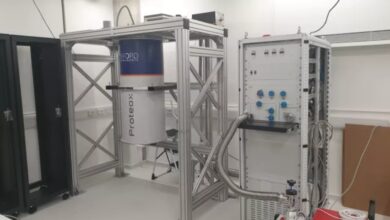Astronomers Capture ‘Hiccupping’ Stars in Space for the First Time

Groundbreaking discovery reveals stars with rhythmic gas ejections, likened to cosmic.
For the first time, astronomers have documented stars exhibiting peculiar outbursts that resemble “Hiccupping,” a term coined to describe their rhythmic and periodic gas ejections into surrounding space. This remarkable phenomenon, observed using advanced telescopes, has provided unprecedented insight into the dynamic and mysterious lives of stars.
The international team of researchers, led by Dr. Eliza Thorne of the Stellar Dynamics Institute, noticed unusual emissions from a group of variable stars in a distant region of our galaxy. These stars periodically eject material into space, creating patterns that resemble a pulsing or weeping motion. According to Dr. Thorne, the behavior appears to be tied to an unstable internal process, akin to stellar “breaths” that release energy and matter.
“It’s as if the star is exhaling repeatedly, shedding its outer layers in a rhythmic manner,” Dr. Thorne explained. “The pattern is unlike anything we’ve seen before and reminded us of Hiccupping—a poetic but apt analogy.”
A Celestial Symphony of Gas and Light
The discovery was made possible through combined observations from the Hubble Space Telescope and ground-based facilities equipped with spectroscopic imaging. The researchers focused on stars categorized as pulsating variables, which change in brightness due to physical expansion and contraction. However, these “Hiccupping” stars displayed an additional, puzzling feature: pulses of gas accompanied by faint bursts of light.
The rhythmic gas ejections form expanding shells of material, which scientists believe could be remnants of earlier stellar instability or a prelude to a more dramatic phase of evolution, such as a supernova.
“What we’re seeing might be the final stages of a star’s life, where it is struggling to maintain equilibrium,” said Dr. Javier Román, a co-author of the study. “Each ‘Hiccupping’ could be a sign of the star shedding its outer layers before eventual collapse.”
Unlocking the Mysteries of Star Evolution
The newly coined “Hiccupping” phenomenon has important implications for stellar astrophysics. It provides clues about how stars release mass and energy over time—critical processes that shape the evolution of galaxies. Observations suggest these stars may exist in a brief but turbulent state lasting thousands to millions of years, a cosmic blink in the lifespan of a star.
Scientists plan to study other variable stars to determine whether this behavior is unique to certain types or a universal phase in stellar evolution. With upcoming space telescopes, such as the James Webb Space Telescope, astronomers hope to observe more details of these enigmatic events.
A Universe Full of Emotion?
While the term “Hiccupping” might sound whimsical, the phenomenon underscores the dynamism of the cosmos. Stars, often thought of as steady and unchanging, experience dramatic upheavals that reveal their vulnerability and impermanence.
“The stars are telling us their story through light, motion, and energy,” Dr. Thorne concluded. “This discovery reminds us that even the seemingly eternal objects in the night sky are alive with change and emotion.”
The findings have been published in The Astrophysical Journal Letters and are already sparking excitement in the global scientific community. As technology continues to advance, who knows what other cosmic expressions await discovery in the vastness of space?




